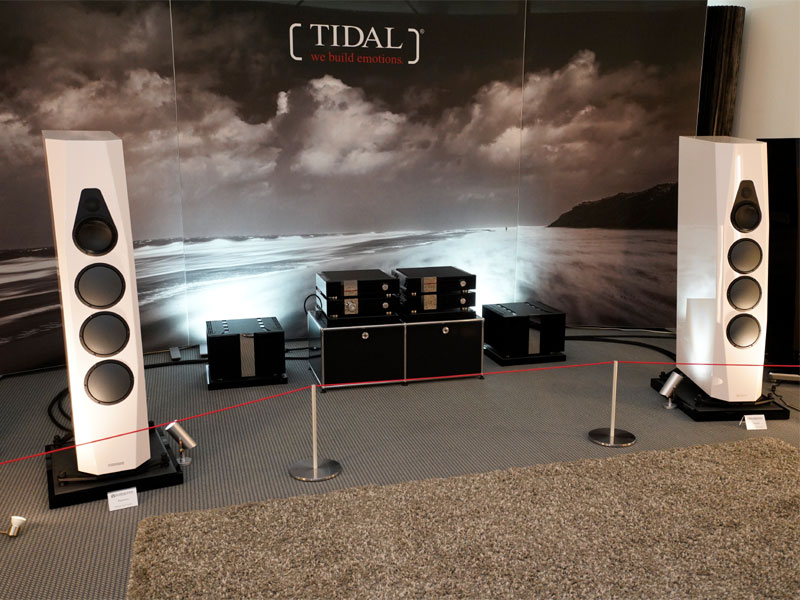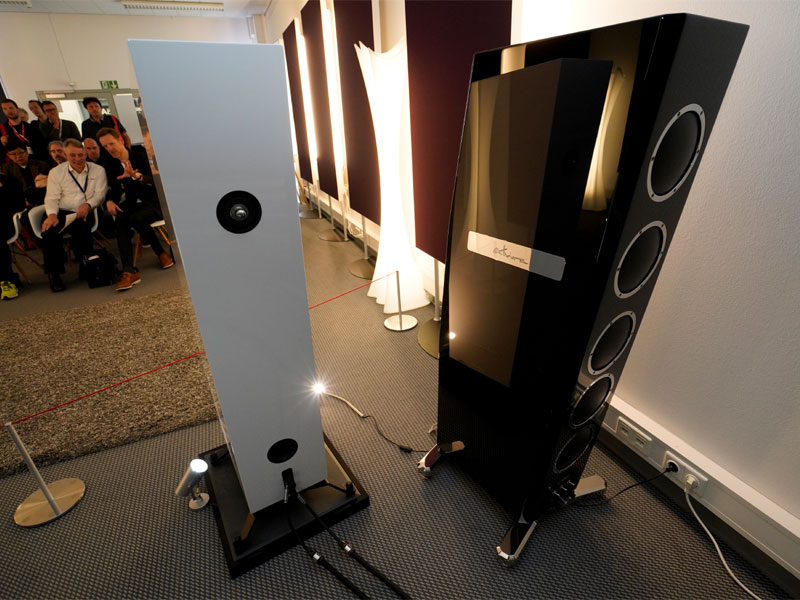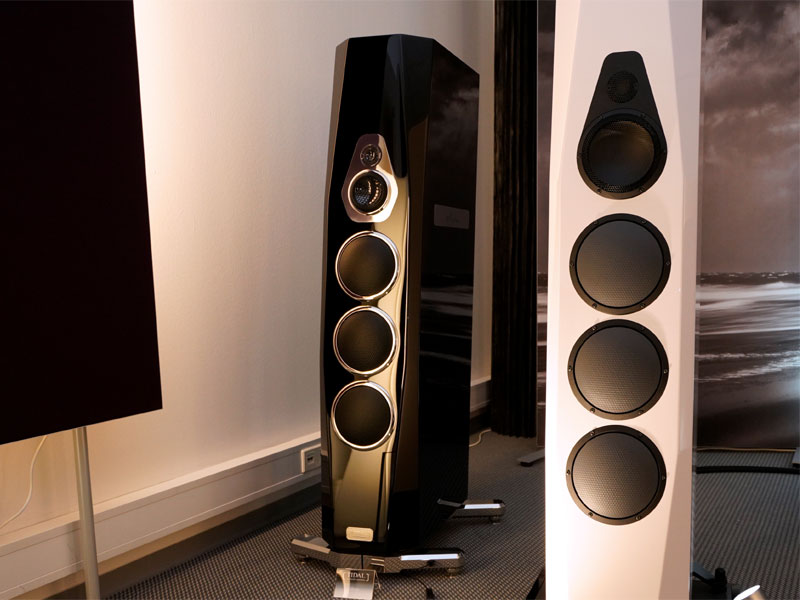High End 2018 • TABlog
What better way to demonstrate "the Tidal difference" than to do what the competition is doing -- building speakers from stock components-- but do it the Tidal way? It’s an elegant riposte, one that simultaneously demonstrates the musical impact of Tidal’s obsessive selection of parts, but also just what Tidal’s manufacturing approach, care and attention to detail can conjure from the same ingredients that everybody else is using. Visit the Tidal room at the Munich High-End show this year and you’ll find a pair of new, three-way floorstanding designs, the Vimberg Mino and Tonda. Deliberately presented as a separate brand to prevent confusion with Tidal’s full-line products (think Prêt à Porter as opposed to Privé), they nonetheless look remarkably similar to their more illustrious (and far more expensive) stable mates. The larger Tonda is around 5% smaller than the established Tidal Akira, and shares that model’s five-driver front-baffle arrangement with its lozenge-shaped sub-baffle for the midrange and high-frequency drivers. But in this case, behind that shiny polished finish there’s a 34mm-thick MDF cabinet, heavily braced, with laminated front and rear baffles.
The enclosures are built in the same German plant as the Tidal cabinets, using waterproofed MDF to resist high-humidity environments. Drivers are standard, off-the-shelf Accuton units, with crossovers constructed entirely from Mundorf components, while in place of stainless-steel the cabinet hardware and sub-baffle are machined from aluminum. In any other context, the Tonda’s bill of parts would probably be presented as a regular audiophile wish list -- which is rather the point. In practice, the similarities between the Akira and the Tonda are not as great as they seem, quite apart from the Tidal speaker’s diamond mid and tweeter, or the five ABRs that populate its rear baffle. But then the price being asked is rather different too. The Tidal Akira weighs in at €180,000 a pair -- yet even at that price it rates as one of the most musically convincing and fascinating products I’ve heard. In contrast, the superficially similar Vimberg Tonda will cost you just €28,000 a pair -- or €23,000 a pair for the smaller but still three-way Mino. That makes quite a statement, both about Tidal’s confidence in its own products and how it feels about the competition.
Standing at the front of the room, the white lacquer finish Vimberg Tondas were flanked by a pair of piano-black Akiras, The two speakers are similar enough in appearance to cause a double take and the impressive sound of the Vimbergs did nothing to clarify the situation. Even on day one, they were clear, uncluttered, detailed, transparent and displayed seriously impressive dynamics -- and they were not even run in, having less than 24 hours on the clock. This is a mighty impressive debut that underlines designer Jörn Janczak’s confidence in the project. I saw several people visibly shocked when told the price. One thought that it was the cost of a single speaker, not the pair. That tells you a lot about both the Tonda’s performance and the quality of the Tidal electronics driving it. But either way, it’s an awful lot of performance for the money. Given their heritage and design DNA,
the Vimberg speakers could just be shaping up as one of audio’s all-time biggest
bargains. Just the insight they offer into the musical benefits of both Tidal’s
exacting approach to parts and production makes them a fascinating prospect. If, as Jörn
Janczak says, "care is free," we are about to find out just how much it’s
worth. |



